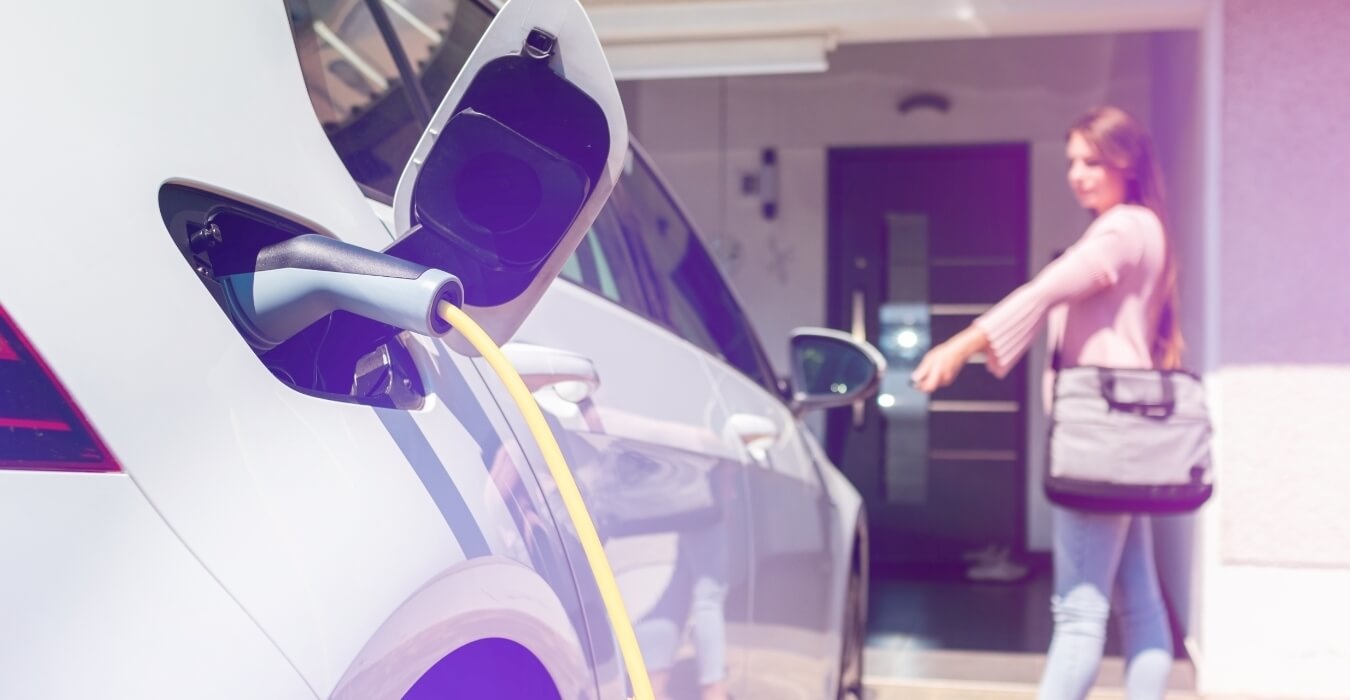
The majority (70%) of all electric cars are charged at home. This is advantageous and convenient, as you don't have to drive to a more expensive public charging station to charge your EV. The important thing here is to have the right technology in place to make charging as easy, fast and economical as possible. We'll go over the different home charging options.
What chargers are available for electric cars?
There are two options when it comes to home charging - you can either use the standard Mode 2 cable that usually comes with the car or have a charging station installed at home. The first option uses the power from your wall outlet and often delivers 3.7 kW. However, it can take (much) longer than one night to fully charge the batteries this way, so manufacturers recommend using these chargers only for 'emergencies'. If you want to use your EV on a daily basis, a home charger is a better choice. It is worth noting that popularly a home charger is often called a wallbox, while Wallbox is also a supplier of charging stations. But there are suppliers of home charging stations, see our site.
Home chargers can be installed on the side of your house, in a garage or on a charging station and allows for safe and reliable charging. A home charger is also more convenient than a separate charging cable from your outlet, no cables running through the house.
What is a home charger?
This is a charger that connects directly to the electrical grid and is designed exclusively for charging an EV. It is often attached to the wall of your home or to a charging station, and you can quickly and easily connect your car to it for charging. You can choose a charger with or without a fixed cable to the charging station. You can also adjust the length of the cable to suit your situation.
There are smart and dumb chargers. Smart charging stations have more setting options, such as programming the time of charging (for example, when the electricity rate is at its lowest), and give you more insight into the number of kWh's your electric car consumes and can automatically settle that with your employer.
Parking
Most wallboxes can supply power up to 11 or even 22 kW with 3-phase. Although there are also simpler and cheaper chargers available that work with 1-phase and 3.7 kW, it is recommended to go for a 3-phase 11 kW charger at least. Even if your electric car can only charge with 1-phase, your next electric car will probably be able to charge with 3-phase 11 kW.
If you want a wallbox, it's helpful if you have a driveway, garage or other parking area close to your home. If you do need to lay the charging cable across the sidewalk or road to your car, it is recommended that you cover your charging cable with a protective mat. This not only protects your charging cable, but also prevents tripping hazards from pedestrians.
What is a smart charger and do I need one?
A smart charging station is a charging station that uses wifi or Bluetooth to connect to an app on your smartphone. This way you can adjust your car's charging schedule remotely, so you can decide when to charge, how many kWh you charged and how much it cost.
In this way you can ensure that you only charge when the electricity is the cheapest and you can also determine at what price the kWh are 'sold'. Smart chargers are more expensive to buy than dumb chargers.
How fast should a home charger be able to charge?
The power the charger can deliver depends on the meter box in your home and the inverter in your car. This ranges from 3.7 kW 1-phase to 22 kW 3-phase, with 22 kW charging 6 times faster than 3.7. The most ideal configuration is a 3-phase 11 kW inverter. At this charging speed you still pay an annual standing charge of about 800 euros to be able to charge with 22 kW. Most new electric cars can also charge at 11 kW, and new households are also supplied with a 3-phase connection. No problem if your house has a 1-phase connection. You can have this upgraded to a 3-phase connection. With the emergence of other energy guzzlers in the home, such as electric cooking or a heat pump, a 3-phase connection is also recommended.
Can I charge my EV from a regular outlet?
Most electric cars come with a portable Mode 2 charger that can be used with a 3-pin plug through a household outlet. This charger charges at 3.7 kW, making it the slowest form of charging. Most car manufacturers recommend having a charging station installed for home charging, with this the charging is done in an efficient and practical and safer way.




